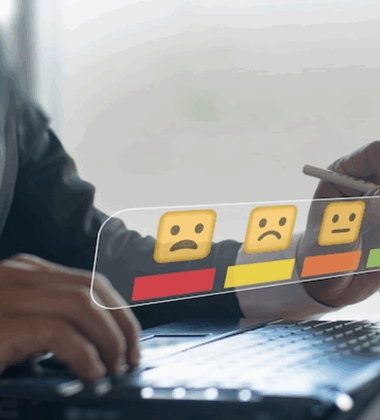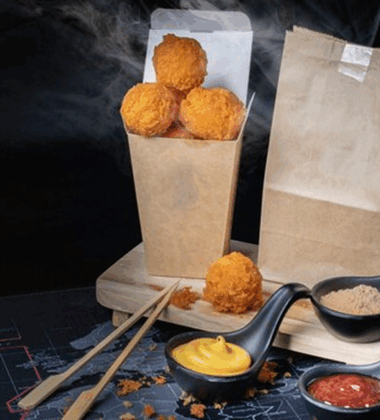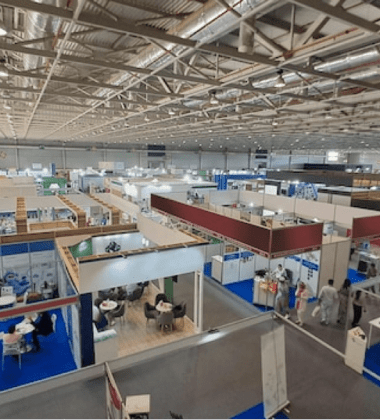The modern food and beverage industry has entered a new era—one where experience trumps exposure. At events like the Food and Beverage Expo USA, brands are no longer content with showcasing products behind glass or offering standard tastings. Instead, they are designing fully immersive exhibits that activate all five senses, with food texture emerging as one of the most powerful yet underutilized elements in trade show design.
As consumer expectations continue to evolve, texture is no longer just a characteristic—it’s a narrative device, a branding opportunity, and a way to connect on a primal level with visitors. In this case study, we explore how leading exhibitors are pushing the boundaries of experiential design through texture-forward environments, from aroma walls to interactive texture tunnels, and how your brand can tap into this trend to stand out at the next expo.
Why Texture Matters in the Expo Experience
When we talk about taste, we often forget that it’s a multisensory experience. Flavor perception is influenced not only by aroma and visual appeal but also by how food feels in the mouth—its crunch, creaminess, chewiness, or snap. Texture affects how we perceive freshness, indulgence, quality, and even nutrition.
Research in sensory marketing shows that food texture can significantly shape consumer expectations and satisfaction. For example, crispy textures often suggest freshness, while velvety or creamy textures signal richness or indulgence. In a crowded trade show like the Food and Beverage Expo USA, leveraging this knowledge can be the difference between a forgettable booth and one that draws crowds, media, and follow-up leads.
The Rise of Multi-Sensory Booths: A Case Study Snapshot
Let’s explore how forward-thinking brands have begun to incorporate food texture and sensory science into their booth designs at leading food expos, with a special focus on the Food and Beverage Expo USA.
1. Aroma + Texture Tunnel by TasteScape
Exhibitor Type: Plant-based snack startup
Target Audience: Millennials, Gen Z, health-conscious consumers
Concept Overview:
TasteScape, a first-time exhibitor at the Food and Beverage Expo USA, created a mini walkthrough experience that activated two powerful senses—smell and touch. The booth featured a tunnel-like structure lined with interactive texture panels that mimicked the mouthfeel of their snack line (e.g., crisp, chewy, airy). Paired with corresponding aroma pods placed at each texture station, visitors experienced the entire snack line without taking a bite.
Results:
- 2.5x more foot traffic than neighboring booths
- 500+ email leads collected
- Coverage by a leading F&B trend publication
Key Takeaway: You don’t need to rely solely on food sampling to create impact. By mimicking food texture and aroma in an interactive, Instagrammable space, TasteScape told a compelling brand story—and stayed within sampling regulations.
2. Texture Play Station by Crumb Theory
Exhibitor Type: Artisanal bakery
Target Audience: Retail buyers, food critics, culinary influencers
Concept Overview:
Instead of the traditional glass display case, Crumb Theory designed a tasting table that highlighted textural contrasts across their product range—from flaky croissants to dense rye loaves. Visitors were guided through a “texture flight,” with each item served alongside a small sensory object: silk for the soft loaf, coarse linen for the crusty bread, rubber beads for chewy cookies.
Results:
- 90% booth dwell time increase
- Direct purchase agreements with 3 national retailers
- 100+ Instagram mentions using their custom hashtag
Key Takeaway: Even low-tech booths can create memorable experiences by incorporating tactile storytelling. Relating food textures to touchable materials helps reinforce the sensory identity of each product.
Food Texture as a Brand Signature
For many successful brands, food texture becomes a signature trait. Think of the crunch of a KitKat, the gooeyness of a grilled cheese, or the snap of a well-made pickle. At expos, these qualities can become interactive showcases that educate and entertain while building deep brand recall.
If your product has a standout textural quality, consider how to elevate it visually or physically:
- Use macro photography to show texture up close
- Play looped videos of the product being broken, stirred, or scooped
- Create a sound station where people can hear the product being chewed or snapped
- Offer a “texture test” for visitors to guess the food based on feel or sound
Designing a Texture-Focused Expo Booth: Your 4-Step Guide
To implement a texture-forward strategy at the Food and Beverage Expo USA, follow these steps:
1. Define Your Texture Story
- What textures are core to your product? (Crunchy, creamy, chewy, flaky?)
- What emotions or qualities do those textures represent? (Freshness, comfort, indulgence?)
- How does this align with your brand promise?
2. Visualize Texture Through Design
- Use tactile materials (e.g., corrugated wood, soft textiles, embossed panels) on booth walls or counters
- Include texture-focused photography in your graphics
- Design booth elements to visually echo your product’s feel (e.g., soft lighting for creamy products)
3. Integrate Interactive Elements
- Let visitors touch raw ingredients or compare before-and-after textures
- Build a texture guessing game or DIY sample station
- Incorporate texture polls to drive engagement (e.g., “Crunchy or Smooth?”)
4. Create Texture-First Content for Post-Expo Sharing
- Record ASMR-style videos featuring your product
- Share close-up shots of textures with captions highlighting the sensory benefits
- Encourage attendees to post about their favorite textures using a custom hashtag
Why Texture Will Dominate 2025 Expo Trends
The Food and Beverage Expo USA is a bellwether for broader industry shifts. As consumer attention spans shorten and interest in sensory wellness grows, texture will become an even more important part of product positioning.
- Health-driven consumers are seeking “real-feel” foods—products that offer satisfying chew or natural crunch
- Sustainability-minded buyers favor minimally processed textures as signs of authenticity
- Tech-savvy chefs and mixologists are using textural contrast to elevate taste perception
In this environment, exhibitors who invest in sensory booth experiences—especially those that highlight food texture—will not only attract more visitors, but also build a deeper emotional connection with their audience.
Final Thoughts: Make Texture Your Competitive Advantage
Whether you’re a legacy brand or an emerging food startup, you have something that’s often undervalued in traditional marketing: texture as a storytelling tool. Use it to your advantage.
By designing booths that engage touch, evoke feel, and dramatize texture, you transform your presence at the Food and Beverage Expo USA from transactional to unforgettable. This isn’t about gimmicks—it’s about grounding your brand in the real, the tactile, and the memorable.
Because in the end, it’s not just about what your visitors taste. It’s about what they remember—and texture leaves a lasting impression.





